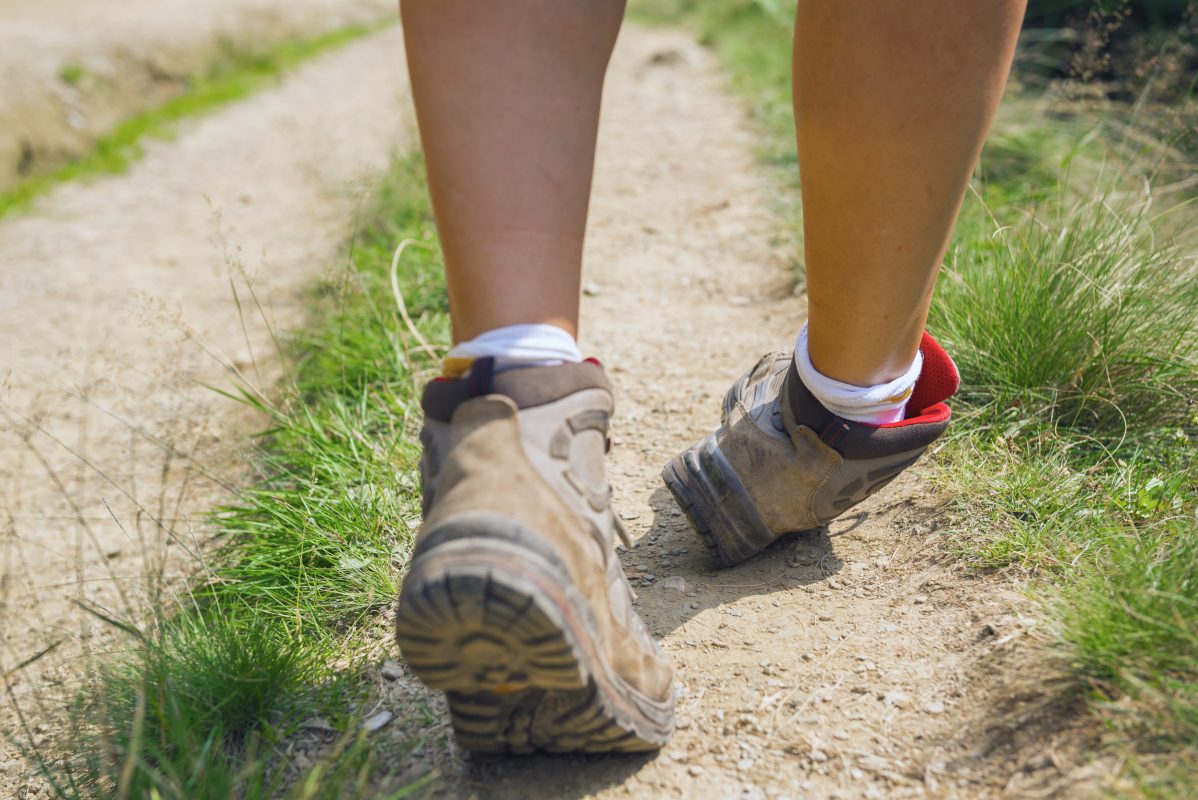
When it comes to injuries that affect our bones, muscles, and ligaments, three common terms are often used: strains, sprains, and fractures. While they may sound similar, these injuries are distinct in their nature and require different approaches for treatment and recovery. Whether you’re an athlete, a fitness enthusiast, or simply going about your daily activities, knowing the difference between strains, sprains, and fractures can be invaluable in understanding how to respond to injuries and promote healing. In this blog, we will delve into the definitions of each injury, their causes, symptoms, and the best practices for managing and treating them effectively.
Strain
A strain is when damage occurs to muscles and tendons as a result of a joint being pulled or stretched too far. Tendons are fibrous cords that attach muscles to the bones and allow our joints to move and be stable. Strains are most commonly seen in the lower back or leg muscles, but can also occur in the wrist, ankle, and other parts of the body where major muscles and tendons are present. Listed below are common strain injuries.
- Hamstring Strain: This occurs when the muscles at the back of the thigh (hamstrings) are stretched or torn, often seen in sports that involve sprinting or jumping.
- Groin Strain: Groin strains affect the muscles in the inner thigh or groin area and are common in sports that require sudden changes in direction or kicking movements.
- Calf Strain: The calf muscles, located at the back of the lower leg, can be strained during activities that involve quick acceleration or intense calf contractions.
- Quadriceps Strain: The quadriceps are the muscles at the front of the thigh, and a strain in this area can occur during activities like running, jumping, or kicking.
- Back Strain: This involves the muscles and tendons in the lower back and can happen due to improper lifting techniques, sudden movements, or poor posture.
- Shoulder Strain: The shoulder muscles and tendons can be strained from repetitive overhead movements or sudden, forceful actions.
- Rotator Cuff Strain: The rotator cuff is a group of muscles and tendons in the shoulder joint, and strain in this area is common among athletes and individuals who perform repetitive arm movements.
- Wrist Strain: Wrist strains can occur from repetitive use or sudden impact, often seen in activities like typing, weightlifting, or playing racquet sports.
- Ankle Strain: The ligaments around the ankle can be strained during activities that involve sudden changes in direction or rolling of the foot.
- Groin Adductor Strain: This involves the muscles on the inner side of the thigh, and it is common in sports that require lateral movements and sudden stops.
Pain, swelling, and muscle spasms are all usual symptoms of a strain, but they can usually be treated at home.
The RICE method is a widely recognized first-aid technique used to manage strains effectively. RICE stands for Rest, Ice, Compression, and Elevation. When you experience a strain, it is essential to promptly initiate the RICE method to alleviate pain, reduce swelling, and promote healing so you can get back to normal activities.
- Rest involves avoiding any activity that exacerbates the strain, allowing the affected area time to recover.
- Applying an ice pack to the injured area in short intervals helps to constrict blood vessels, decrease inflammation, and numb the pain.
- Compression with an elastic bandage provides support and reduces swelling.
- Lastly, elevating the injured limb above heart level helps to minimize swelling by aiding fluid drainage.
Remember, the RICE method is most effective when used within the first 48 hours after a strain occurs. If the pain persists or the strain is severe, seeking medical attention is crucial.
Sprain
Similar to a strain, a sprain occurs when ligaments are stretched beyond their limit – or even torn. Ligaments are tough bands of fibrous tissue that connect two bones together in your joints. The most common location for a sprain is your ankle, but sprains are also commonly seen in the knee and wrist. Symptoms of a sprain are similar to that of a strain with swelling and pain, but a sprain will also usually bring bruising with it. The majority of all ankle sprains will heal without any need for surgery. Even a complete ligament tear can heal naturally if given the appropriate rest. Rest and protection of the joint are the initial recommendations for a soft tissue injury. Once swelling is reduced, range of motion, strength, and flexibility will be reintroduced through various exercises dictated by your healthcare provider.
Some common sprain injuries include:
- Ankle Sprain: The most common type of ankle injury, a sprained ankle, occurs when the ligaments around the ankle joint are stretched or torn, often due to rolling or twisting the foot.
- Wrist Sprain: This type of sprain is a common injury that can result from a fall on an outstretched hand, causing the ligaments in the wrist to stretch or tear.
- Knee Sprain: The knee joint is susceptible to sprains, especially the medial collateral ligament (MCL) and the anterior cruciate ligament (ACL).
- Thumb Sprain: A thumb sprain can occur when the thumb is forcefully bent backward, stretching or tearing the ligaments supporting the thumb joint.
- Elbow Sprain: Elbow sprains typically affect the ligaments on the inner (medial) or outer (lateral) side of the elbow and often result from repetitive overuse or sudden impact.
- Shoulder Sprain: Shoulder sprains can happen when the ligaments in the shoulder joint are stretched or torn due to traumatic events or excessive force.
- Hip Sprain: Although less common, the hip joint can experience sprains, particularly during high-impact activities or accidents.
- Finger Sprain: A finger sprain occurs when the ligaments supporting the finger joints are injured, usually from hyperextension or impact.
- Back Sprain: The ligaments supporting the spine can be sprained due to lifting heavy objects or sudden movements.
- Neck Sprain: Neck sprains, also known as whiplash injuries, happen when the neck undergoes rapid back-and-forth movements, such as in car accidents.
Mild to moderate sprains can often be treated with the RICE method (Rest, Ice, Compression, and Elevation), anti-inflammatory medication and appropriate pain management. However, severe sprains may require medical evaluation and possibly imaging to assess the extent of the injury.
Fracture
Unlike strains and sprains, a fracture is when a bone is cracked or broken. The joints and ligaments may also be damaged when a fracture occurs. Symptoms of a fractured bone include sudden and severe pain, swelling, and bruising, and the inability to bear weight or move the injured part of your body. You may not require surgery if the joint remains stable and the fracture is minor. If the fracture is out of place or your joint is unstable, your orthopedic surgeon may need to do surgery. Listed below are common types of bone fractures.
- Closed Fracture: Also known as a simple fracture, this type of fracture does not break the skin. The bone may be broken, but the surrounding skin remains intact, reducing the risk of infection compared to open fractures.
- Open Fracture: An open fracture, also called a compound fracture, is one where the broken bone pierces through the skin, leading to an external wound. This type of serious injury poses a higher risk of infection and requires immediate medical attention in an emergency room to prevent complications.
- Greenstick Fracture: Typically seen in children whose bones are more flexible, a greenstick fracture is an incomplete break, where the bone bends and cracks but doesn’t completely separate. It resembles the way a green branch of a tree would bend but not break completely.
- Comminuted Fracture: In a comminuted fracture, the bone is shattered into three or more fragments. This type of fracture can be challenging to treat and may require surgery to realign and stabilize the bone fragments.
- Transverse Fracture: A transverse fracture occurs when the fracture line is perpendicular to the long axis of the bone. It often results from a direct blow or impact on the bone.
- Oblique Fracture: An oblique fracture has a diagonal fracture line across the bone. These fractures can be unstable and may require surgical intervention for proper alignment and healing.
- Spiral Fracture: Spiral fractures have a twisting pattern along the bone. They commonly occur due to rotational forces applied to the bone during a fall or accident.
- Stress Fracture: A stress fracture, also known as a hairline fracture, results from repetitive stress on a bone over time, often seen in athletes and people who engage in high-impact activities. Unlike other fractures, stress fractures may not be immediately noticeable and can develop gradually.
- Avulsion Fracture: In an avulsion fracture, a small fragment of bone is pulled away from the main bone due to the force of a tendon or ligament pulling on it. This type of fracture is common in sports injuries.
- Compression Fracture: Compression fractures typically occur in the vertebrae and result from the spine being compressed, often seen in conditions like osteoporosis or high-energy trauma.
- Pathological Fracture: A pathological fracture occurs when a bone is weakened by an underlying medical condition, such as cancer or osteoporosis. These fractures can happen with minimal force and require specialized treatment.
It is important to have your injuries evaluated and treated by an orthopedic surgeon for an accurate diagnosis to ensure proper healing and avoid complications. Your surgeon will help create a treatment plan for you, as the approach for each injury type varies. It may involve casting, splinting, orthopedic surgery, physical therapy, or other interventions to support bone healing and recovery.





